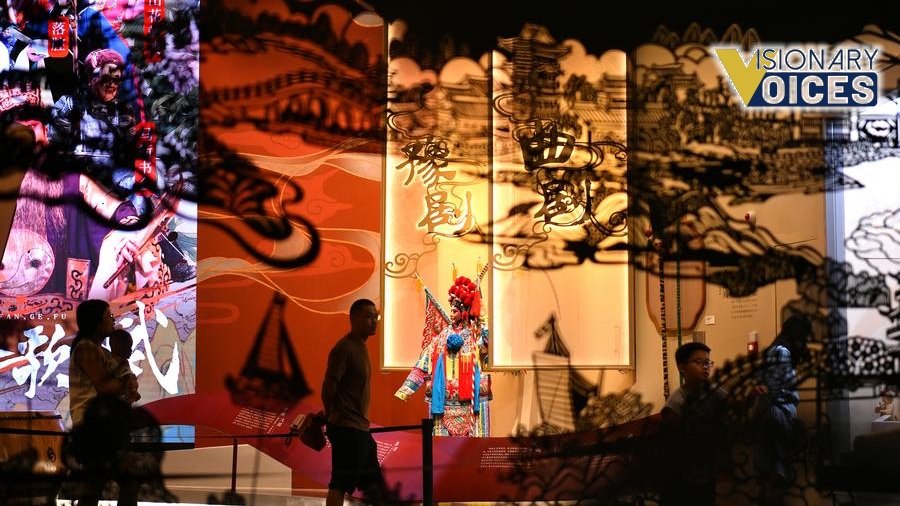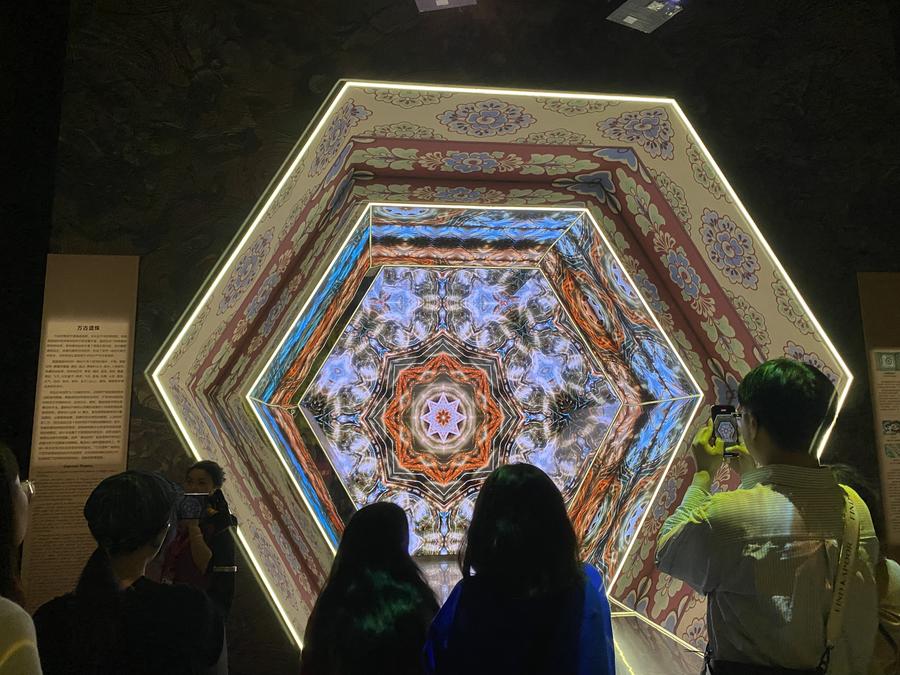
People visit China Grand Canal Intangible Cultural Heritage Exhibition Hall in Cangzhou, north China's Hebei Province, August 2, 2024. [Photo/Xinhua]
By Hamzah Rifaat Hussain
Every year, China's Two Sessions marks a landmark event, bringing political leaders and delegates from across the country together to partake in the annual plenary session of the National People's Congress (NPC) and the Chinese People's Political Consultative Conference (CPPCC). This year is no different. Given that the NPC is the country's top legislative body, while the CPPCC is a specialized consultative body of China's whole process people's democracy, the Two Sessions stands as the most important political event of the year. It reveals policy priorities, economic growth targets, visions for foreign relations and discussions on key issues spanning social, ecological and political development.
As China remains attuned to rapid domestic and international trends, there is little doubt that the global appeal of its traditional culture can play a key role in building national confidence, projecting and fostering positive influences across the globe.
The tenets of China's cultural confidence
For any nation, cultural confidence reflects its national resilience, solid philosophical foundations, rich traditions values and heritage. As one of the world's oldest and most continuous civilizations, China has not only thrived in a globalized world but also kept its societal values, codes and cultural identity. Several examples highlight how its traditional culture fuels impetus to its national identity and should be capitalized on.
Nowhere is this more evident than in the famous Peking Opera, which continues to be revitalized domestically through modern technologies such as virtual reality (VR) and artificial intelligence. The opera, one of China's cultural treasures, and also gained popularity in countries such as Japan, where youth are captivated by its distinctive blend of vivid visuals, dramatic storytelling and dynamic performances of speech, dance and combat – all anchored in its four traditional roles of gentlemen, women, rough men, and clowns.
As we usher into a new technological stage, there is great potential for treasures such as the Peking Opera to further appeal to younger generations across the world. This involves leveraging technological innovations and adapting to contemporary themes to create performances that resonate with real-life experiences.
Additionally, Chinese soft power is best showcased through the worldwide celebration of some Chinese traditional festivals like the Chinese New Year and the Mid-Autumn Festival. These remain central unifying forces within the Chinese community and present a positive image of China despite negative narratives portrayed in some Western media. Around the world, traditions like Chinese language exhibitions in Sydney, lion dances at Columbia University and dragon symbolism have become global cultural events, evoking a sense of national pride among the Chinese community and attracting international interest.

Visitors viewing the exhibition "Magnificence and Grandeur: Immersive Experience of Grotto Art" at the National Museum of China in Beijing, capital of China, April 16, 2024. [Photo/Xinhua]
Leveraging traditional culture through innovation in modern societies
Building on this foundation, 2025 presents opportunities to engage with evolving societal interests and utilize innovative technologies to enhance the global reach of Chinese culture.
Take traditional Chinese philosophies such as Confucianism, Daoism and Buddhism, collectively known as the "Three Teachings," as an example. Each offers important insights into personal development, harmony with nature, ethics and codes of conduct. In the age of globalization, which emphasizes revenue generation, employment and pursuing higher standards of living, these same philosophical tenets can be applied to corporate culture, urbanization, architecture and interfaith dialogue. Such integration can offer significant benefits, as these philosophies promote self-reflection, mental well-being and social harmony – elements that are crucial for a balanced approach to economic development.
However, this will only be fully realized if digital platforms such as Virtual Reality and Augmented Reality (AR) are leveraged. Both VR and AR can potentially provide educational platforms to receivers who can then access traditional Chinese culture firsthand – be it through craftsmanship, theatre, philosophy or cuisine. They also play a key role in advancing virtual museums, enabling people worldwide to explore historical sites such as the Forbidden City, as well as China's traditional paintings and calligraphy. All this contributes to fostering a more informed, holistic and nuanced perspective on China.
As a result, the 2025 Two Sessions serve as an important reminder that China's cultural legacy, when combined with technological innovation will remain a powerful tool in advancing its international influence and soft power. By seamlessly blending tradition with modernity, China will continue to be a cultural powerhouse, promoting peaceful development and coexistence on the global stage.
This article is a joint collaboration with Initiate Futures, a policy think tank specializing in global affairs.
Hamzah Rifaat Hussain is the senior expert at Hawaii-based think tank Initiate Futures.

 中文
中文



